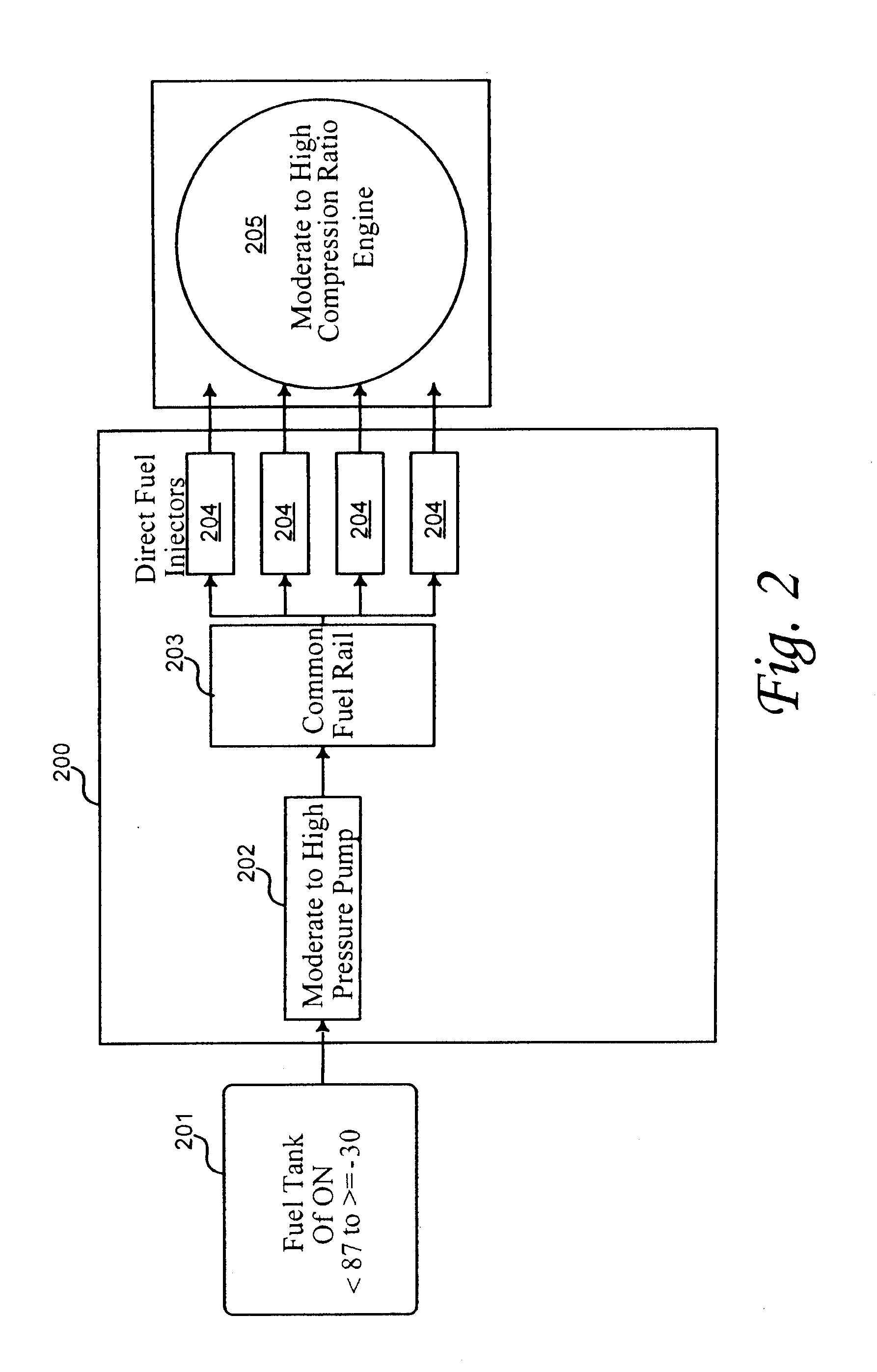Low octane fuel for gasoline compression ignition
a low octane fuel and compression ignition technology, which is applied in the direction of fuels, machines/engines, mechanical equipment, etc., can solve the problems of not being adapted to run on fuels with lower compression ignition characteristics, and the physical compression ignition delay characteristics of fuel molecules are not included in the direct injection fuel system, so as to reduce the physical compression ignition delay characteristics of fuel molecules and reduce the effect of compression ignition characteristics
- Summary
- Abstract
- Description
- Claims
- Application Information
AI Technical Summary
Benefits of technology
Problems solved by technology
Method used
Image
Examples
Embodiment Construction
[0012]In homogenous charge compression ignition engines, the lack of a direct initiator of ignition (e.g., the spark in a spark ignition (gasoline) engine, or the boundary of fuel-air mixing, in a stratified charge (diesel) engine) causes inherent difficulties in control of the combustion process. Control over the ignition process and, consequently, engine operation may be increased through a reduction in the ignition delay of the fuel used in the engine.
[0013]FIG. 1 illustrates physical and chemical processes that impact the compression ignition delay of fuels. In the ignition process, a volume of fuel is injected 101 into a combustion volume in a spray. Then, the fuel spray forms into droplets 102. The fuel droplets then vaporize 103 and the fuel vapor mixes 104 with air present in the combustion volume, here a cylinder of an internal combustion engine. Next, the fuel undergoes chemical processes such as the formation of free radicals 105. After these physical and chemical process...
PUM
| Property | Measurement | Unit |
|---|---|---|
| octane rating | aaaaa | aaaaa |
| pressure | aaaaa | aaaaa |
| pressure | aaaaa | aaaaa |
Abstract
Description
Claims
Application Information
 Login to View More
Login to View More - R&D
- Intellectual Property
- Life Sciences
- Materials
- Tech Scout
- Unparalleled Data Quality
- Higher Quality Content
- 60% Fewer Hallucinations
Browse by: Latest US Patents, China's latest patents, Technical Efficacy Thesaurus, Application Domain, Technology Topic, Popular Technical Reports.
© 2025 PatSnap. All rights reserved.Legal|Privacy policy|Modern Slavery Act Transparency Statement|Sitemap|About US| Contact US: help@patsnap.com



